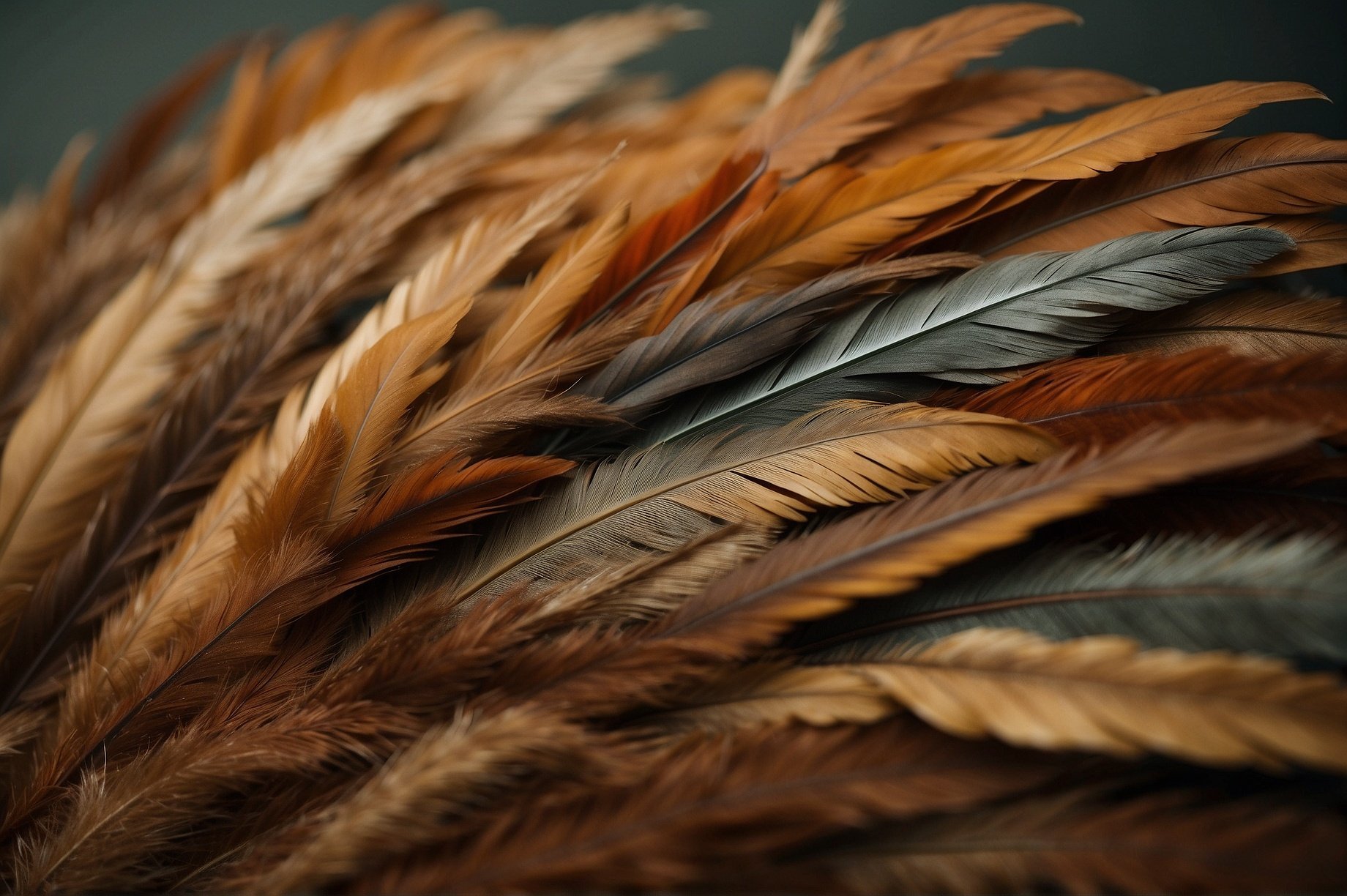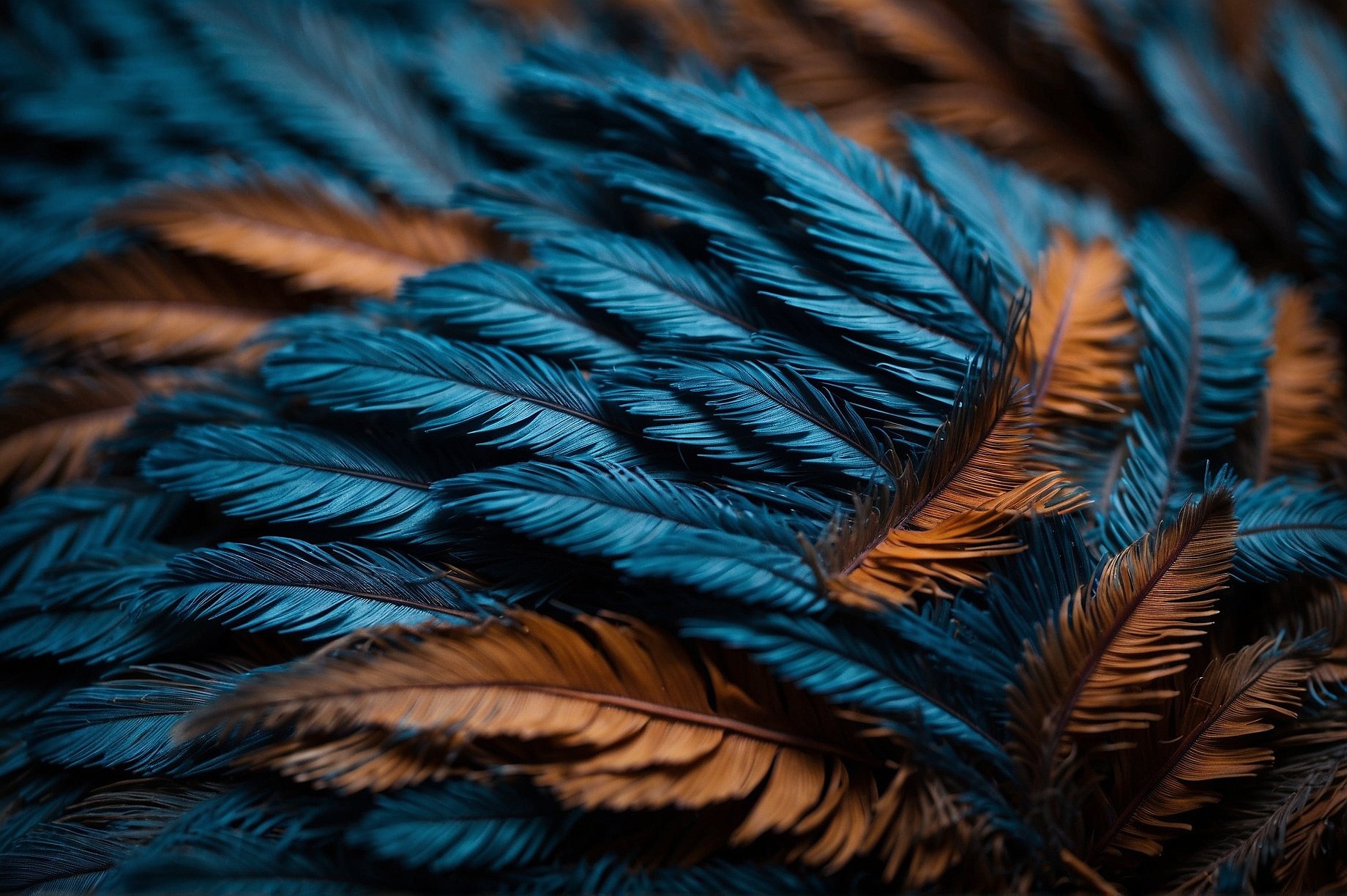Exploring the World of Bird Feathers
As an Amazon Associate, we earn from qualifying purchases. By purchasing through these links, you can support our efforts to bring you more birdwatching tips and recommendations.
Here are some direct links to cool feather items! jump to items
Feathers—those delicate, intricate structures that grace the skies and captivate our hearts. They are more than beautiful adornments; they are marvels of nature's engineering. In this blog post, we will explore the fascinating world of bird feathers, exploring their different types, functions, maintenance, and even legality.
Join us as we unravel the secrets behind these remarkable structures and discover how they contribute to the wonders of the avian world.
Different Types of Bird Feathers
Birds possess an array of feathers, each with a unique purpose and structure. Let's delve into some of the most common types:
Down Feathers
Down feathers are soft, fluffy feathers found close to the bird's body, providing insulation and warmth. For example, the Common Eider Duck (Somateria mollissima) has some of the warmest down feathers, used extensively in manufacturing duvets and pillows.
Contour Feathers
Contour feathers are streamlined feathers that form the outer covering of a bird's body, aiding in flight and providing structural support. The Peregrine Falcon (Falco peregrinus), the fastest bird in the world, relies heavily on its contour feathers for its remarkable flight speed.
Flight Feathers
Flight feathers are specialized feathers found on the wings and tail, enabling birds to soar through the air gracefully and precisely. The Albatross (family Diomedeidae) has long-flight feathers, facilitating its ability to glide over vast ocean distances.
Filoplumes
Filoplumes are tiny, hair-like feathers associated with contour feathers, providing sensory information to the bird. The Peacock (Pavo cristatus) has a rich array of filoplumes surrounding its magnificent tail feathers, enhancing its sensory perception.
Semiplumes
Semiplumes are feathers that offer a combination of down and contour characteristics, lending insulation and aerodynamic benefits. The King Penguin (Aptenodytes patagonicus) sports semiplumes that help it withstand the harsh Antarctic conditions.
Bristles
Bristles are stiff, specialized feathers found around the eyes, mouth, or legs, serving as sensory tools or protection. The Whiskered Auklet (Aethia pygmaea), a seabird species, exhibits distinct bristles around its beak that aid in its nocturnal foraging activities.
Function of Feathers
Feathers serve a multitude of purposes, each contributing to the survival and success of birds:
Insulation and Temperature Regulation
Feathers play a critical role in insulation and temperature regulation for birds. The unique structure of down feathers traps air close to the bird's body, forming a thermal barrier that helps maintain body temperature.
This is particularly vital in extreme weather conditions, enabling birds like the Emperor Penguin (Aptenodytes forsteri) to survive sub-zero Antarctic temperatures.
Flight and Aerodynamics
Flight feathers, comprising primaries, secondaries, and tail feathers, are pivotal in the mechanics of bird flight. Primaries attached to the 'hand' part of the wing provide thrust, secondaries attached to the 'arm' furnish lift, while tail feathers offer steering and brake controls.
Camouflage and Coloration
Feathers contribute substantially to a bird's camouflage and coloration. Subdued and mottled feather coloration can blend birds seamlessly into their environments, protecting them from predators.
On the other hand, vibrant feather colors serve in identification, courtship, and intimidation. Birds like the Scarlet Macaw (Ara Macao) and Peacock (Pavo cristatus) display diverse colors for these purposes.
Courtship and Display
Feathers are a vital component in bird courtship and displays. Elaborate feather structures, intricate patterns, and vivid colors help birds attract mates and establish dominance.
Species such as the Indian Peafowl (Pavo cristatus) use their extravagant tail feathers in courtship displays. In contrast, the Black Grouse (Tetrao tetrix) uses its unique tail feather structure in dominant displays.
Maintenance of Feathers
Birds dedicate significant time and effort to maintaining their feathers in prime condition:
Preening and Oiling
Birds engage in a grooming activity known as preening, where they use their beaks to meticulously align the barbs of their feathers and remove any dirt or parasites.
This process helps to keep their plumage in top condition for optimal functionality. An additional element of this process involves spreading oil across their feathers. Birds produce this oil from a special gland close to their tail.
When applied over the plumage, this oil enhances the waterproofing capabilities of the feathers and helps to maintain their structure, contributing to the overall health and survival of the bird.
Molting and Feather Regeneration
Regular shedding and replacement of feathers is a process known as molting. This allows birds to maintain an optimal plumage necessary for various functions such as flight, insulation, and protection.
The molting process is typically seasonal, and birds may experience a temporary loss of flight or temperature regulation capabilities during this period. However, the new feathers that grow back are often more robust and vibrant, indicating the bird's good health and readiness for breeding or migration.
Feather Uses
Humans have utilized Feathers in various ways throughout history, becoming an integral part of many cultures and industries. They are often used for decorative purposes, featuring traditional costumes, jewelry, and home décor items due to their diverse range of colors and patterns.
In the fashion industry, feathers create boas, hats, and other clothing accessories, adding a touch of elegance and uniqueness. Furthermore, they are employed in producing high-quality bedding products, namely pillows, duvets, and mattress toppers, valued for their natural insulating properties that provide warmth and comfort. In certain cultures, feathers hold symbolic meaning and are used in ceremonial rituals.
One must recognize their historical use in writing tools, where they were crafted into quills. The multifaceted use of feathers underscores their cultural, aesthetic, and practical significance to human society.
Feather-Related Products
For those captivated by the allure of bird feathers, various products celebrate their beauty and significance:
Bird Identification Books:
One excellent resource is "The Sibley Guide to Birds, 2nd Edition" by David Allen Sibley. Bird enthusiasts highly regard this comprehensive field guide, which features detailed illustrations of over 800 bird species, including their various plumage and feather characteristics.
Feather Jewelry:
Consider "Alex and Ani Women's Feather Spirit Wrap," a bracelet that beautifully incorporates the feather motif into its design. This piece of jewelry is made of recycled materials and is adjustable to fit most wrist sizes. It's a unique accessory that can be a conversation starter.
Crafting Feathers:
"12 PCS Real Natural Peacock Eye Feathers 10-12 inch for DIY Craft, Wedding and Holiday Decorations" is an excellent choice for crafting. These feathers, perfect for various crafts, come in approximately 12 pieces. They are beautiful!
Legality of Collecting Feathers
While feathers are undoubtedly captivating, it is essential to understand the legal and ethical considerations surrounding their collection. Laws and regulations vary across countries and regions, aiming to protect and conserve bird populations.
Before collecting or possessing feathers, please be sure to familiarize yourself with local rules and consider alternative ways to appreciate their beauty. Once researched, collect feathers as part of your daily walks and enjoy!
Interesting Facts about Bird Feathers
Feathers have played significant roles throughout history, culture, and even fashion. Consider these intriguing facts:
Feathers as Ancient Adornments
Feathers have adorned humans for centuries, symbolizing status, spirituality, and connection to the natural world.
Feathers in Folklore and Symbolism
Feathers are symbolic in various cultures, representing freedom, wisdom, strength, and divine guidance.
Feather Coloration and UV Reflectance
Birds' feathers exhibit an astonishing array of hues and patterns, some invisible to the human eye. Many feathers reflect ultraviolet light, allowing birds to communicate and attract mates in ways we can only imagine.
Feather Location and its Importance
The location of a bird's feathers plays a crucial role in many aspects of its existence, from flight efficiency and temperature regulation to courtship displays and camouflage.
This section will delve into the significance of feather placement on a bird's body and how the specific location impacts a bird's adaptability and survival.
Tail Feathers
Tail feathers, also known as rectrices, play a critical role in a bird's flight and maneuverability.
They function like the rudder of a ship, aiding in steering and braking. Tail feathers are also often used in displays to attract mates, demonstrating the health and vitality of the bird.
Wing Feathers
The primary wing feathers, or remiges, are the key driving force behind a bird's flight.
These specialized feathers are solid yet flexible, enabling the wing to change shape and adapt to different flight conditions. The aerodynamic shape of wing feathers allows for efficient flight, whether the bird is soaring, diving, or flapping.
Secondary Wing Feathers
Located on the inner part of the wing, it contributes to the bird's lift during flight. They're shorter and broader than the primary feathers, forming the wing's contour when spread.
These feathers are also integral to flight control, particularly during slow speeds or taking off and landing.
Conclusion
Bird feathers are wonders of nature, embodying beauty and functionality. They enable flight, provide insulation, and contribute to the diverse array of colors and patterns found in the avian world.
As we admire the elegance and complexity of feathers, let us also appreciate the importance of their preservation and ethical appreciation.
May this exploration into the world of bird feathers inspire you to delve deeper into the wonders of nature, encouraging a sense of awe, respect, and a greater understanding of the incredible creatures that grace our skies.
FAQ
What is the function of tail feathers in bird flight?
Tail feathers serve as a rudder for birds, aiding in steering and braking during flight. They are also often used in displays to attract mates, showcasing the bird's health and vitality.
How do primary wing feathers contribute to bird flight?
Primary wing feathers, or remiges, are the main driving force behind a bird's flight. They are solid yet flexible, which allows the branch to change shape and adapt to different flight conditions. The aerodynamic shape of these feathers enables efficient flight—whether the bird is soaring, diving, or flapping.
What role do secondary wing feathers play?
Secondary wing feathers, located on the inner part of the wing, contribute to the bird's lift during flight. They are shorter and broader than the primary feathers, forming the wing's contour when spread. These feathers are also integral to flight control, particularly during slow speeds or taking off and landing.
Why are bird feathers important?
Bird feathers embody beauty and functionality. They enable flight, provide insulation, and contribute to the diverse array of colors and patterns found in the avian world. They are marvels of nature, and their preservation and ethical appreciation are paramount.
What can we learn from understanding bird feathers?
Understanding bird feathers can inspire a deeper appreciation of nature, fostering a sense of awe and respect for the incredible creatures that grace our skies. This knowledge can also lead to a greater understanding of avian biology and the principles of flight.
How do birds maintain and care for their feathers?
Birds spend a significant amount of time preening their feathers. Preening involves cleaning, realigning, and oiling the feathers with a secretion from a gland at the base of the tail. This meticulous care is essential for keeping feathers in optimal condition for flight, insulation, and display.
How do bird feathers evolve?
Bird feathers undergo molting, where old feathers are shed and replaced. The timing and pattern of molting can vary widely among species. Understanding the molting process can give insights into the bird's life stage, health, and how they adapt to seasonal changes.
animal world, feather, fly, tip, owls, idea, chicks, ducks, identify, pigeons, shapes, course, head, season, brush, wear, appearance, songbirds, picture, seabirds, research, tips, male, smooth, wash, guess, dirty, food, raise, interested, specimens, central shaft








